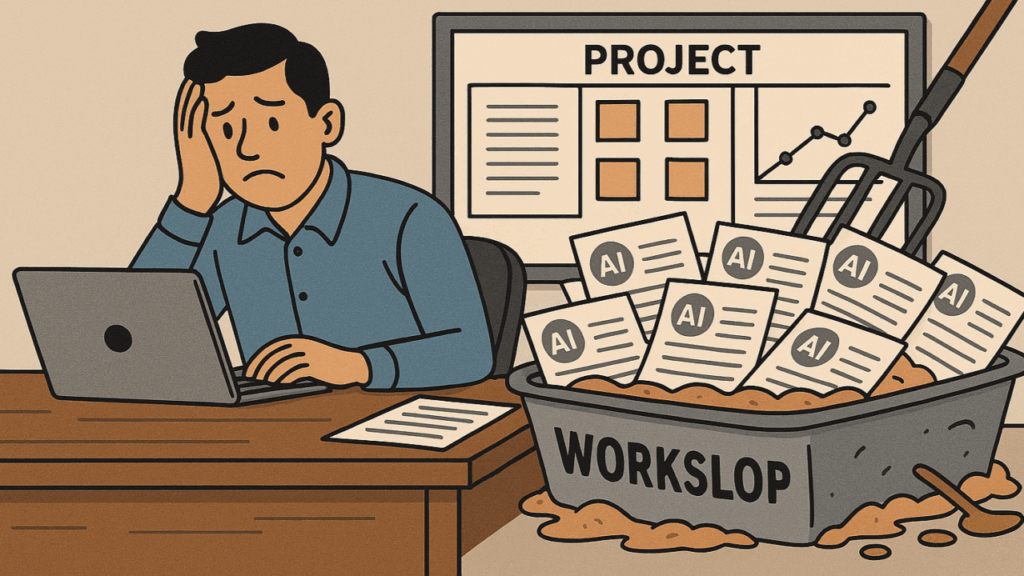We’ve been talking a lot about noise reduction at Sensei lately. Not just in our tools, but in how we structure work and make decisions. It’s a conversation that’s stuck with me, because I’m seeing the same challenge play out in other teams too: the pressure to stay visible, responsive, and constantly “up to date,” even when it doesn’t actually help move the work forward.
In many project environments, the pressure to stay visible and compliant is growing. With the rise of tools like DevOps, Jira, and Power BI dashboards, teams are expected to keep everything current, organised, cross-referenced, and traceable. But somewhere along the way, the purpose of delivery risks getting lost in the process of performing it.
It’s not that the tools are the problem. They can be incredibly useful when they bring structure and clarity. The issue is when the tool starts to feel like the work itself, instead of something that helps you do the work.
The Rise of Visibility Theatre
A team can be fully up to date in DevOps. Every story sized and assigned, every link in place. Yet they can still feel unclear about direction, stuck waiting for decisions, or overwhelmed by layers of reporting. In those moments, the visibility created by the platform doesn’t translate into real clarity. It becomes visibility theatre. Delivery is being tracked, but not actually enabled.
And this isn’t a one-off. It’s a broader pattern. As delivery environments become more complex, organisations often double down on tooling to reassert control. But the unintended result is a kind of compliance loop. Teams spend more time updating workflows and surfacing data than moving the work forward. The platform becomes the performance, and meaningful progress quietly slows behind the scenes.
Tools Should Serve Delivery, Not Drive It
This issue isn’t new, but it’s becoming harder to ignore. Teams today often work within tight constraints: shifting priorities, limited resourcing, and layers of matrixed stakeholders. On top of that sits the weight of compliance, audit trails, and performance reporting. Under pressure, it’s understandable that platform discipline becomes a coping mechanism. A way to create order, even if it’s only surface deep.
These dynamics aren’t always the result of poor intent. Often, they build up gradually. One adjustment here, one workaround there, as teams try to keep pace with shifting priorities and growing demands. The tooling forms around the uncertainty, offering a sense of structure. But over time, it can become harder to tell whether it’s helping or just keeping the anxiety at bay.
But when dashboards start to replace dialogue, or structured workflows are treated as outcomes in themselves, something essential is lost: delivery confidence. The team’s ability to say, with clarity, “Here’s where we are. Here’s what we’re solving. Here’s what’s next.” That kind of confidence doesn’t come from tools. It comes from shared understanding, trust, and space to think.
What We Need More Of
We need clarity before compliance. Tools should enable flow, not introduce friction. Before setting up reporting rituals or automations, it’s worth asking: Does this help the team deliver better, or just look busier?
Delivery improves when platforms reduce noise, not amplify it.
We also need delivery rituals that humanise the work. Retrospectives, walk-throughs, and review sessions remain powerful. Not because they tick a governance box, but because they create space for reflection, shared problem-solving, and alignment. These moments surface far more value than another updated status.
We need decision framing, not just status reporting. A reporting layer might tell you what’s done, but it won’t explain what matters, why trade-offs were made, or where ambiguity still lives. Those conversations are essential, especially when teams are under pressure.
And we need to protect space to think. Real progress depends on time to explore, test, validate, and adjust. That kind of depth doesn’t always show up in platform metrics, but it’s what keeps delivery meaningful.
A Better Way Forward
The challenge now isn’t just delivering in complexity. It’s protecting the space to deliver well without losing momentum to the machine.
Let’s not confuse a healthy dashboard with a healthy team. One supports the other. But they are not the same.
Want to learn more, get in touch with us today!




